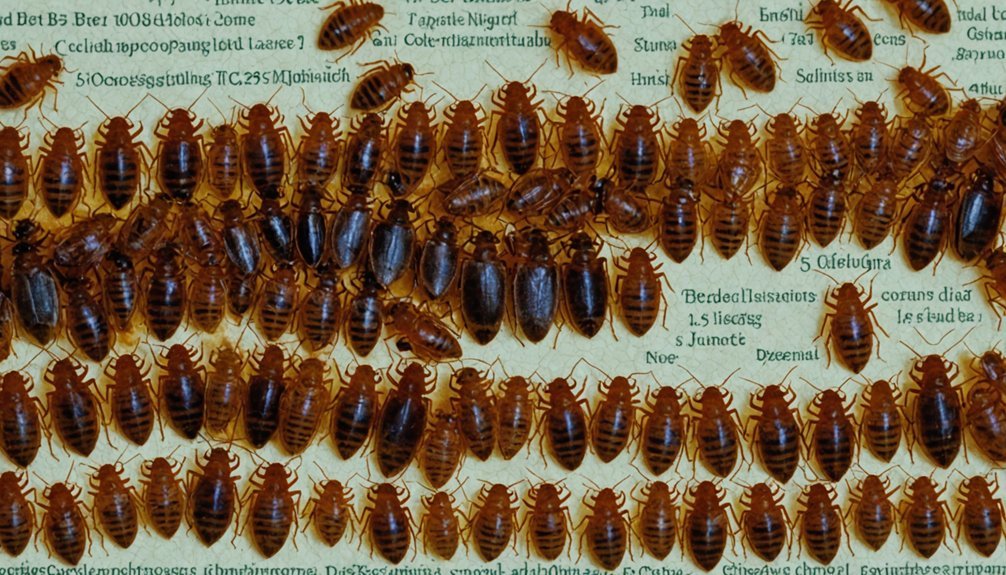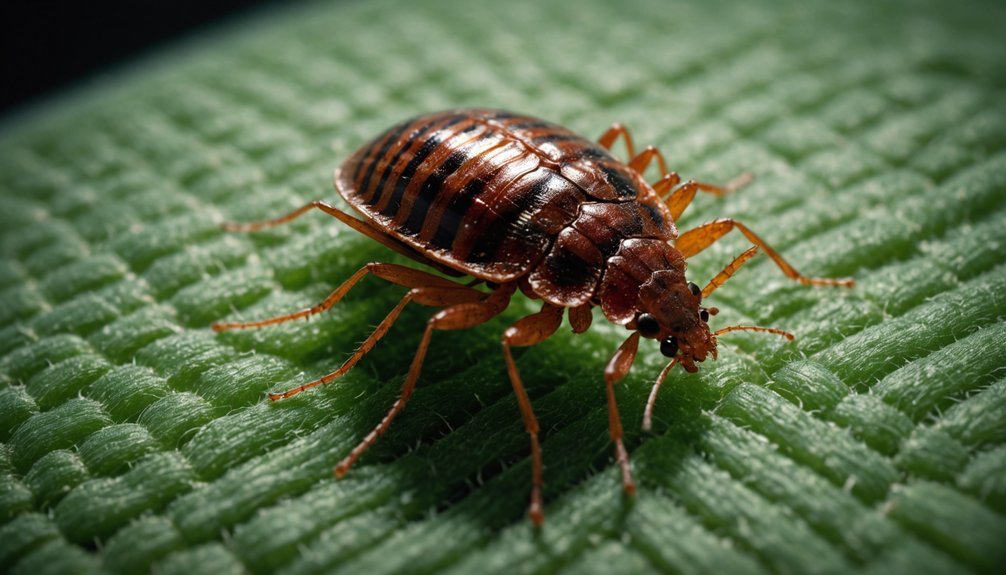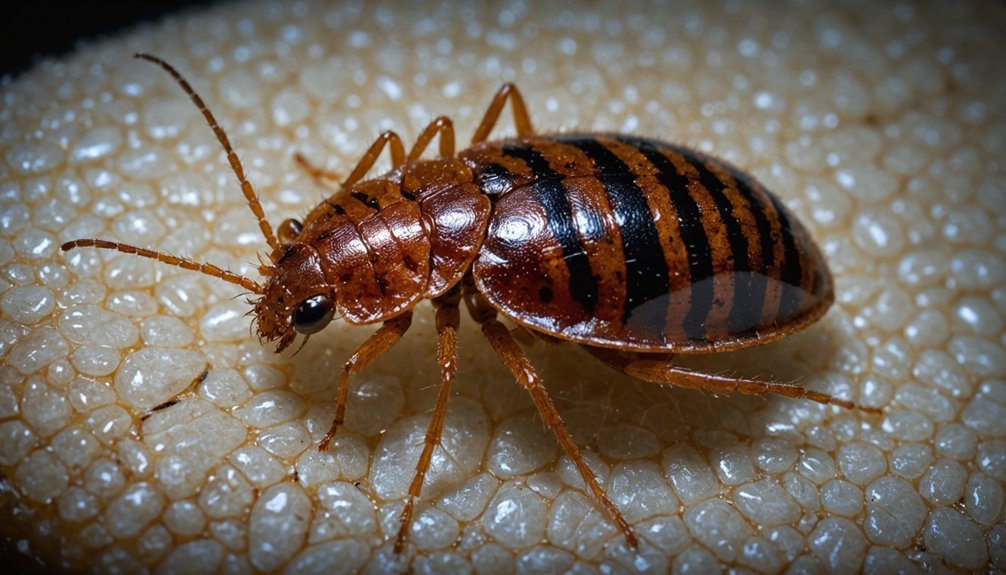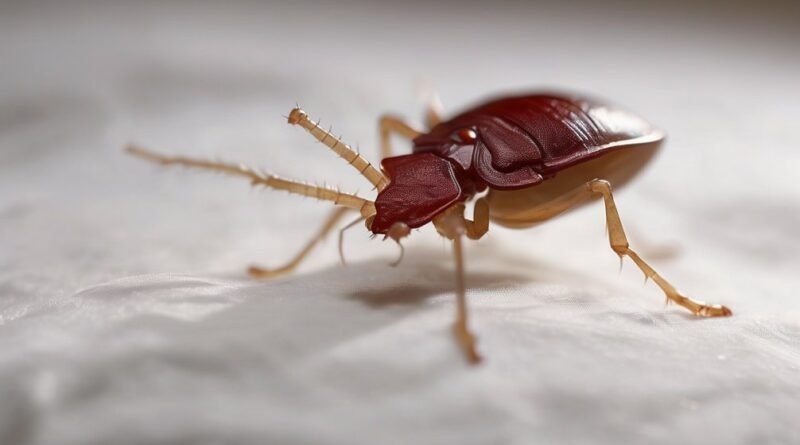Do Bed Bugs Spread Diseases? The Latest Research
You’ve probably heard conflicting information about whether bed bugs can make you sick. While these persistent pests have earned their reputation for causing sleepless nights and anxiety, their role in disease transmission isn’t as clear-cut as you might think. Recent studies have uncovered surprising findings about bed bugs’ ability to carry pathogens, including HIV and hepatitis B, but the real question is whether they can actually pass these diseases to humans.
Key Takeaways
- Despite extensive testing of over 40 pathogens, there is no definitive evidence that bed bugs transmit diseases to humans in natural settings.
- Bed bugs can harbor pathogens like HIV and hepatitis B, but lack effective biological mechanisms to spread these diseases.
- Laboratory studies show bed bugs can transmit Chagas disease parasites, but no natural transmission cases have been documented.
- Bed bugs possess strong immune defenses and antimicrobial compounds that help prevent them from becoming effective disease vectors.
- Research challenges include standardizing detection methods and gathering complete evidence about potential disease transmission through bed bugs.
The Historical View vs. Modern Research

While bed bugs have plagued human dwellings for thousands of years, our understanding of their role in disease transmission has evolved considerably.
In ancient times, people viewed these pests mainly as a biting nuisance, trying to control them with folklore remedies and basic treatments like boiling water. The discovery that bed bugs have been associated with humans since 60,000 years ago demonstrates just how long we’ve dealt with these persistent pests.
Modern research tells a different story than what you might expect. Despite testing for over 40 different pathogens, scientists haven’t found definitive evidence that bed bugs transmit diseases to humans.
Surprisingly, bed bugs have not been proven to transmit diseases to humans, despite extensive research on dozens of pathogens.
Even when pathogens like HIV and hepatitis B can survive in bed bugs for weeks, they don’t replicate or spread effectively. A revealing two-year study in Gambia showed that eliminating bed bugs didn’t reduce hepatitis B infection rates, challenging long-held assumptions about their role in disease transmission.
Bed Bugs and Chagas Disease: New Evidence

While you’ve probably heard that bed bugs don’t transmit diseases, recent laboratory studies reveal they can efficiently transmit Trypanosoma cruzi, the parasite responsible for Chagas disease.
The research shows bed bugs can carry live T. cruzi parasites for up to 97 days and pass them through their developmental stages, much like the traditional Chagas vectors known as kissing bugs. This groundbreaking study was conducted by NMSU researchers who focused specifically on bed bugs’ ability to host pathogens.
However, scientists haven’t yet confirmed whether bed bugs actively spread Chagas disease in natural settings outside the laboratory, making it essential to continue monitoring this potential public health concern.
Laboratory Evidence Shows Promise
Recent laboratory studies have revealed promising evidence about the transmission of Chagas disease through triatomine bugs, commonly known as kissing bugs.
You’ll find that researchers have confirmed these insects can acquire and maintain the Trypanosoma cruzi parasite throughout their development stages, making them effective disease vectors.
The evidence shows that T. cruzi successfully survives and reproduces within the bug’s digestive system, while molecular analysis has confirmed the presence of parasite DNA in both lab and field specimens.
What’s particularly significant is that these infected bugs can transmit the parasite to mammals through their bite sites and fecal matter.
This research has strengthened our understanding of transmission patterns and is helping scientists develop better diagnostic tools and control measures to combat Chagas disease.
A comprehensive study spanning 10 years in Florida revealed significant insights into kissing bug behavior and disease transmission patterns.
Natural Transmission Still Uncertain
New evidence about bed bugs and Chagas disease reveals a complex picture. While lab studies show bed bugs can transmit the disease-causing parasite, there’s no solid proof they’re spreading Chagas in real-world conditions.
- You’ll be relieved to know that scientists haven’t found any confirmed cases of bed bugs transmitting Chagas to humans in natural settings.
- You should understand that bed bugs’ behavior differs markedly from kissing bugs, potentially limiting their role as vectors.
- You might be concerned that bed bugs can carry the parasite for over 3 months.
Unlike bed bugs, kissing bugs are nocturnal and actively seek out hosts to feed on their blood.
- You’ll want to note that more research is still needed to determine real-world transmission risks.
- You can take comfort in knowing that experts are actively studying this relationship to better understand potential threats.
The current evidence suggests bed bugs might be capable vectors, but their actual role in disease transmission remains uncertain.
Key Pathogens Found in Bed Bug Studies

Researchers have also discovered fungal pathogens like *Aspergillus* species and parasites such as *Trypanosoma cruzi* (Chagas disease) in bed bugs.
The bacterial phylum Proteobacteria dominated the microbial communities found in both fed and unfed bed bugs.
While these organisms can survive in bed bugs under laboratory conditions, scientists haven’t documented any natural disease transmission cycles.
Most findings come from controlled experiments rather than real-world settings.
Understanding Vector Competency
While pathogens can survive in bed bugs for several weeks, there’s currently no definitive proof they can spread diseases to humans.
For a bed bug to effectively transmit disease, it must be able to acquire, maintain, and successfully pass the pathogen to a new host.
You’ll find that scientists have identified significant gaps in proving bed bugs’ vector competence, as studies haven’t demonstrated all these necessary transmission steps for any known pathogen.
Pathogen Survival In Bugs
Recent laboratory studies exploring pathogen survival in bed bugs have revealed complex interactions between these insects and various disease-causing organisms.
While you might be concerned about disease transmission, it’s important to understand that laboratory findings don’t always translate to real-world scenarios.
- You’ll find it unsettling that bed bugs can harbor DNA from over 45 different pathogens in controlled settings.
- You may be surprised that certain pathogens like T. cruzi and B. quintana can actually survive and multiply inside bed bugs.
- You should know that bed bugs’ complex genetic mutations affect their interaction with disease-causing organisms.
- You might be relieved that environmental factors often limit actual disease transmission.
- You can take comfort in knowing that there’s no definitive evidence of bed bugs completing natural transmission cycles of diseases.
Transmission Pathway Requirements
The complex nature of disease transmission requires specific conditions for bed bugs to become effective vectors. For an insect to successfully transmit diseases, it must overcome several biological barriers and demonstrate specific capabilities.
To qualify as a competent disease vector, bed bugs would need to acquire pathogens from infected hosts, maintain or amplify these organisms within their bodies, and then transfer them to new hosts through bites or feces.
However, research shows bed bugs rarely meet these requirements. While they can acquire pathogens like Bartonella quintana and store them briefly, they don’t effectively replicate or amplify these organisms.
Most importantly, there’s no proven mechanism for them to transmit viruses like HIV or hepatitis B to humans. Mathematical models examining factors like biting rates and environmental conditions don’t support bed bugs as significant disease vectors.
Vector Capacity Evidence Gaps
Despite extensive research into bed bugs’ potential as disease vectors, significant gaps remain in understanding their vector competency.
While scientists have detected various pathogens in bed bugs, including hepatitis B, HIV, and *Trypanosoma cruzi*, there’s no conclusive evidence they can transmit these to humans.
Laboratory studies show only partial completion of vector competence steps, lacking proof of full transmission cycles.
- You’ll find it surprising that despite being blood-feeders, bed bugs haven’t been proven to spread any diseases.
- It’s concerning that most studies rely on correlations rather than concrete transmission evidence.
- You should know that pathogen detection in wild bed bugs often lacks vital viability data.
- You’ll be relieved that genome sequencing is helping reveal the mystery of their vector incompetency.
- It’s worth noting that modern research tools are finally enabling more definitive studies.
Social and Environmental Risk Factors
Social and environmental conditions play an essential role in bed bug infestations and their potential to spread disease. You’re more likely to encounter these pests in crowded, low-hygiene environments where resources for prevention and treatment are limited. Housing instability, poor building conditions, and the acquisition of second-hand furniture increase your risk of infestation.
| Risk Factor | Impact | Prevention |
|---|---|---|
| Crowding | Higher transmission rates | Maintain personal space |
| Poor Housing | More hiding spots | Seal cracks, reduce clutter |
| Climate Change | Faster bug life cycles | Year-round monitoring |
Rising temperatures are extending breeding seasons, while social stigma and limited access to healthcare delay proper treatment. If you’re living in multi-family housing or areas with frequent resident turnover, you’ll need to be especially vigilant about inspection and prevention measures.
Biological Traits That Impact Disease Spread
While bed bugs feed exclusively on human blood, their biological traits greatly limit their ability to transmit diseases. Their bodies contain powerful immune defenses and antimicrobial compounds that neutralize many pathogens before they can spread to humans.
- Your risk of getting sick from bed bugs is surprisingly low due to their specialized salivary glands that produce pathogen-fighting substances.
- Their unique reproductive method triggers strong immune responses that help eliminate disease-causing organisms.
- Their nocturnal behavior and limited mobility reduce opportunities for pathogen transmission.
- Their feces might contain pathogens, but their antimicrobial body fluids typically neutralize threats.
- Even though they can harbor some disease agents like T. cruzi in lab settings, their biological defenses prevent effective transmission in real-world conditions.
Current Research Challenges and Priorities
Research into bed bugs’ potential as disease vectors faces significant scientific and logistical hurdles that limit our understanding. You’ll find that coordinating multidisciplinary teams of social workers, clinicians, and scientists is essential but challenging when collecting simultaneous samples from insects and patients. Detection methods need standardization, while distinguishing between surface contamination and true infection remains difficult.
| Challenge | Impact | Priority Need |
|---|---|---|
| Coordination | Limited data collection | Improved collaboration frameworks |
| Detection Methods | Inconsistent results | Standardized protocols |
| Sample Collection | Incomplete evidence | Advanced field techniques |
| Population Access | Reduced study scope | Ethical guidelines |
| Resistance Issues | Control difficulties | New management strategies |
Current priorities include developing better molecular detection techniques, establishing clear transmission dynamics, and overcoming insecticide resistance while working with vulnerable populations.
Conclusion
While you might worry about bed bugs spreading diseases, current research shows they’re not effective disease vectors. Though they can carry pathogens like HIV and hepatitis B, their biological makeup prevents successful transmission to humans. Even with Chagas disease, there’s no evidence of natural transmission. Your main concerns should focus on prevention and elimination rather than disease risks. Rest assured, these pests are more of a nuisance than a health threat.

